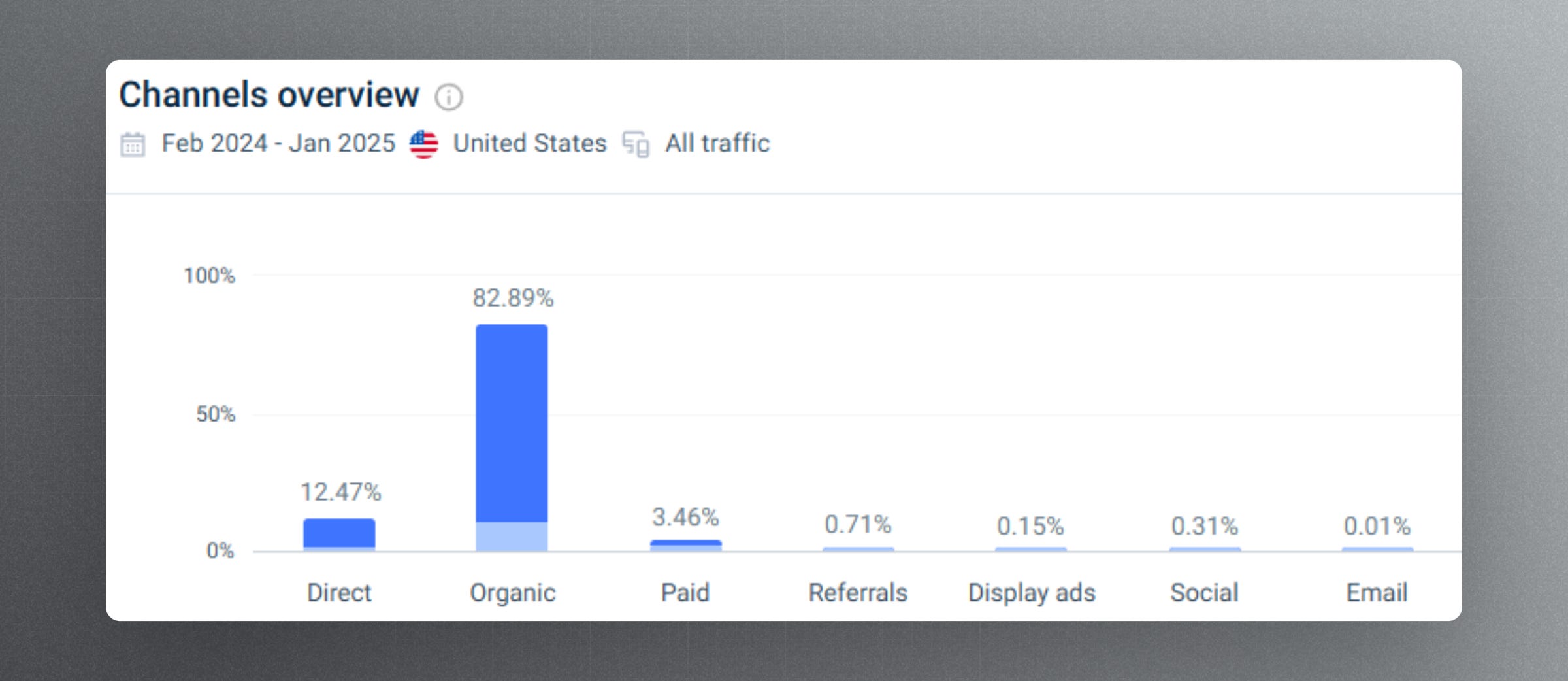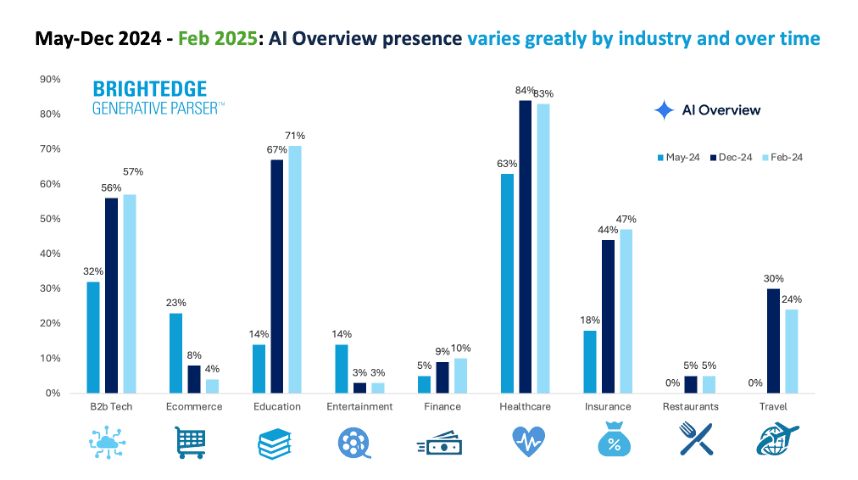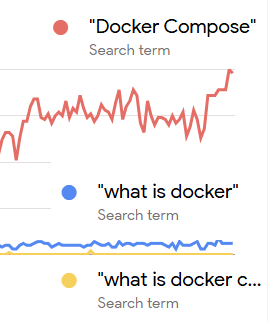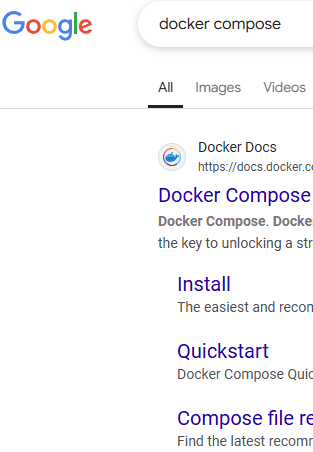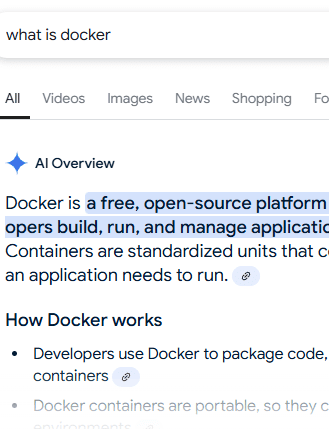Deep SEO: The Potential Impact Of AI Mode And Deep Search Models via @sejournal, @Kevin_Indig
Boost your skills with Growth Memo’s weekly expert insights. Subscribe for free!
Last week, Google officially launched AI Mode, an AI Overview on steroids, in beta.
Almost one year after the launch of AI Answers in the search results, we have enough data to show that the net impact on the open web is as positive as Trump’s tariffs on the U.S. economy. Spoiler: Not very positive.
AI Overviews take more clicks away from classic search results than they give back to cited sources. AI Mode has the potential to rip the gaping trade deficit AI Overviews are already causing on traffic wide open.
I argue that the appearance of AI Mode is the natural response to Deep Search and the potential outlook of the future of AI Search.
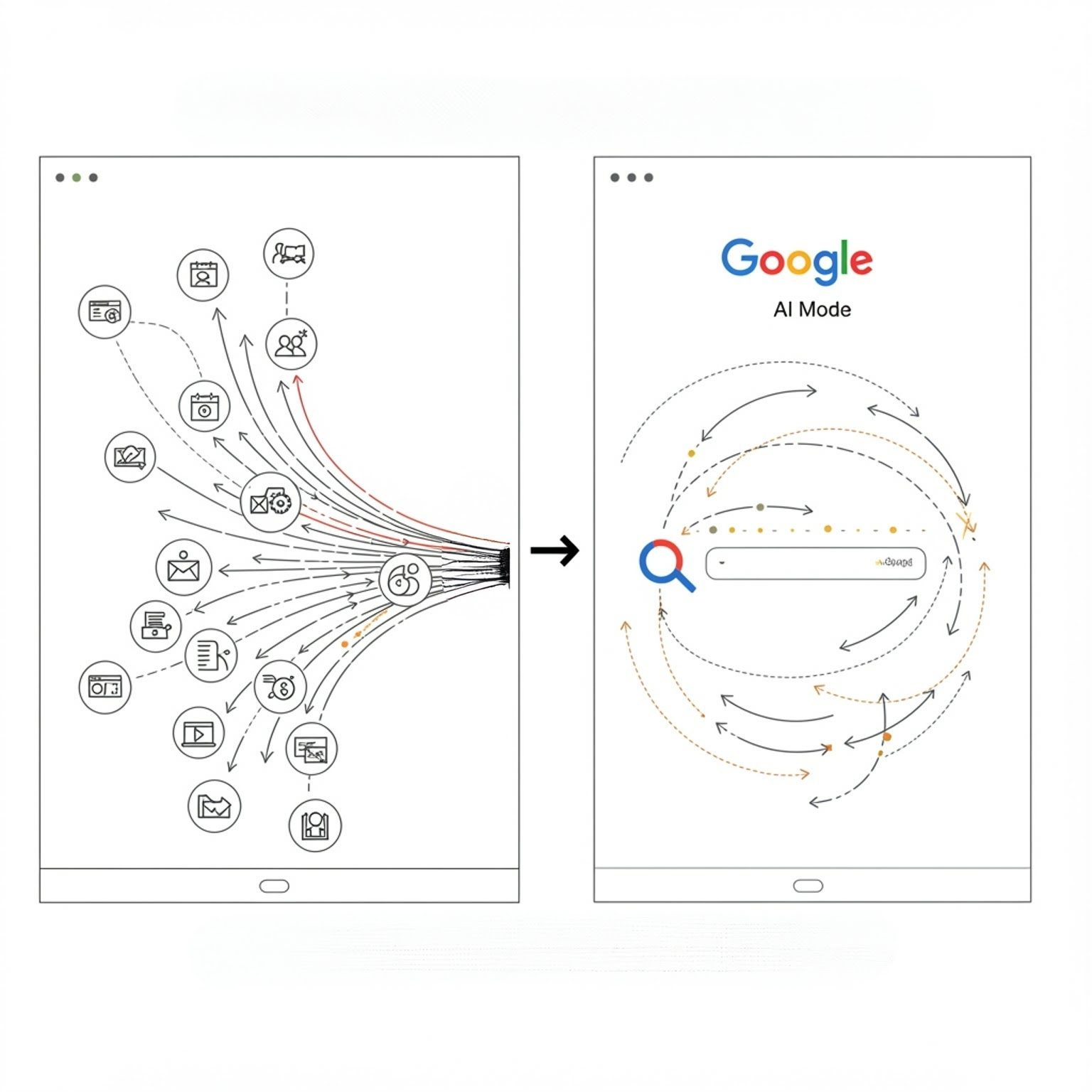 Image Credit: Lyna ™
Image Credit: Lyna ™Deep Research Threatens Google
Deep Search is an AI Agent by Open AI that creates lengthy reports about a subject of your choice: “An agent that uses reasoning to synthesize large amounts of online information and complete multi-step research tasks for you.”
The most obvious application is market research, but the agent can also deliver rich insights into consumer topics like buying a car, booking a trip, or getting a credit.
Deep research is built for people who do intensive knowledge work in areas like finance, science, policy, and engineering and need thorough, precise, and reliable research. It can be equally useful for discerning shoppers looking for hyper-personalized recommendations on purchases that typically require careful research, like cars, appliances, and furniture.
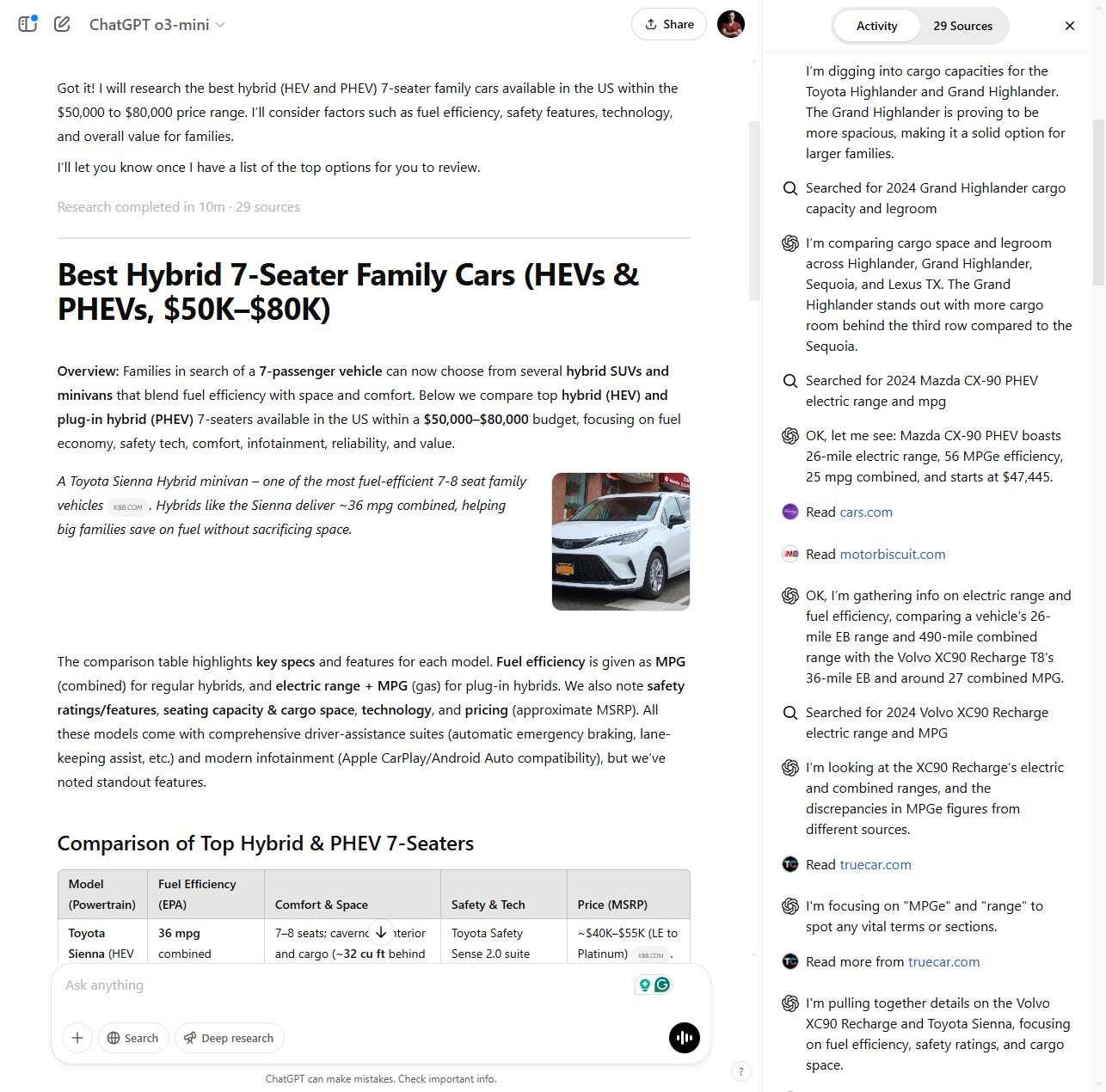


Deep Search performs tens to hundreds of searches to compile a report. I’ve tried prompts for purchase decisions.
When I asked for “the best hybrid family car with 7 seats in the price range of $50,000 to $80,000,” Deep Research browsed through 41 search results and reasoned its way through the content.
Some examples of search reasoning:
I found a Kelley Blue Book article on 7-seat hybrids. It’s a good starting point, though not all details are always included.
I’m digging into cargo capacities for the Toyota Highlander and Grand Highlander. The Grand Highlander is proving to be more spacious, making it a solid option for larger families.
I’m looking at the XC90 Recharge’s electric and combined ranges, and the discrepancies in MPGe figures from different sources.
The report took 10 minutes to put together but probably saved human hours of research and at least 41 clicks – clicks that could’ve gone to Google ads.
The Case For Deep Search
Are Deep Research agents a threat to Google? I think so.
Here’s why:
- The results are impressive, and the time savings are massive. Early on, Google bragged about how quickly it put the search results together. But that was speed to results, not speed to answer. Today, Deep Search agents take minutes to get an answer, but it’s all you need.
- There is massive potential for personalization, from sources to search criteria.
- Conversational back and forth, just like with a salesperson in a store. Deep Re-search agents provide a concise summary that users can expand and explore at their own pace.
- It turns out that every search engine or AI chatbot either already has a Deep Search agent or is working on one. It could truly be the future of Search for complex queries.
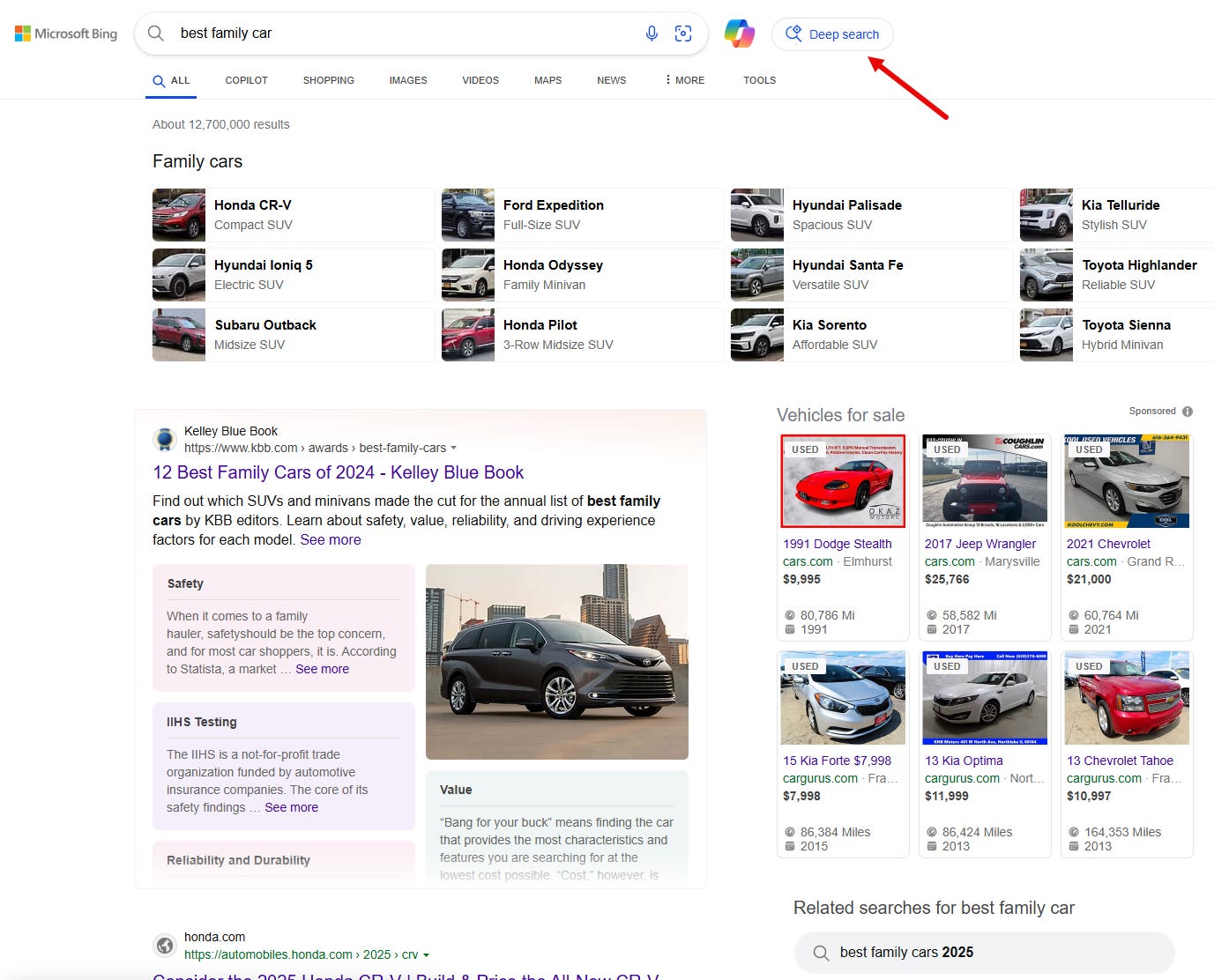


Bing had a “Deep Search” feature since December 2023! And it does exactly what the name promises, just faster and not as deep as ChatGPT’s agent.
Today’s search engines are powerful tools that help us find information on the web, but sometimes they fall short of our expectations. When we have complex, nuanced, or specific questions, we often struggle to find the answers we need. We ourselves know what we’re looking for, but the search engine just doesn’t seem to understand.
That’s why we created deep search, a new Microsoft Bing feature that provides even more relevant and comprehensive answers to the most complex search queries. Deep search is not a replacement for Bing’s existing web search, but an enhancement that offers the option for a deeper and richer exploration of the web.1
I didn’t think I’d live long enough to see the day that Google copies Bing … But they’re not alone.
Grok has “Deep Search” and Gemini and Perplexity have “Deep Research.” Everyone is copying each other, and they’re not even putting in the effort to choose a different name. What a strong sign of commoditization.
My theory: Google modeled AI Mode after Bing’s Deep Search after seeing what ChatGPT’s Deep Search can do.
Using a custom version of Gemini 2.0, AI Mode is particularly helpful for questions that need further exploration, comparisons and reasoning. You can ask nuanced questions that might have previously taken multiple searches — like exploring a new concept or comparing detailed options — and get a helpful AI-powered response with links to learn more.2
Interestingly, AI Mode has the opposite of AI Overviews: In Google’s Q3 earnings announcement, Sundar PichAI said Google sees an “increase in search usage among people who use the new AI overviews”.3
So, AI Overviews lead to more searches, but AI Mode saves users time and queries:
You can ask nuanced questions that might have previously taken multiple searches — like exploring a new concept or comparing detailed options — and get a helpful AI-powered response with links to learn more.4
I don’t think we’ll ever go back to the pre-AI way of search. The universal key challenge of AI answers, whatever their form, is trust. The obvious problem is hallucination.
It’s ironic that ChatGPT Deep Research tells me it browsed through 29 sources, but when I counted, I found 41.
However, reasoning models are getting better at solving this problem with raw computing, i.e., by “thinking harder” about their answers.
The bigger solvable problem for Deep Search agents is source selection.
Untrustworthy sources are the microplastics of AI answers. There is a good reason why all reasoning models openly show their reasoning.
Even though we might pay as much attention to the reasoning details as to any Terms of Service, they make us feel like a lot is happening in the background.
Perception is important for trust. However, source selection is a very solvable problem: Users can simply tell the model to ignore the sources they don’t want, and the model memorizes that behavior over time.
Two less solvable problems remain:
- Bias: In my analysis of AI chatbot research, I pointed out that LLMs have a bias towards global brands, luxury brands, corporate sources and prompt sentiment.
- Access: Information needs to be on the internet for Deep Search agents to find it (that’s where Google and Bing have a big competitive advantage).
The biggest question, of course, is whether Deep Search Agents will find broad adoption or stay in the knowledge worker bubble.
AI Mode could bring it to the masses and drive the stake deeper into the heart of informational clicks.
The Impact On SEO
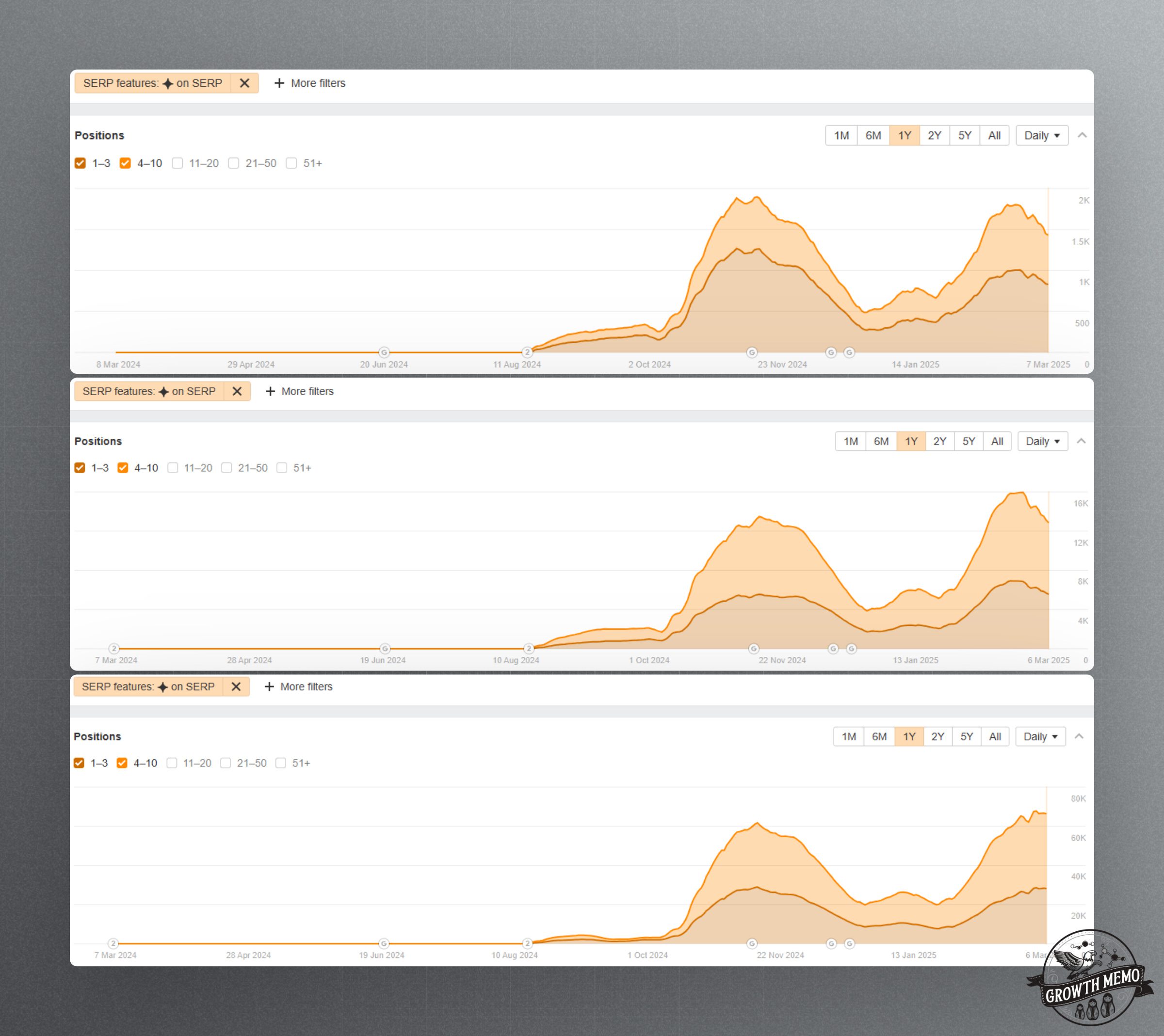


The impact of AI Overviews on SEO traffic is negative.
In my meta-analysis of 19 studies about AI Overviews, I found that AIOs reduce click-through rates across the board. Will AI Mode make it worse? Most likely. But there is hope.
First of all, Deep Search agents are very transparent with their sources and sometimes queries.
ChatGPT’s Deep Search literally calls out what it’s searching for, so we can hopefully track and optimize for these queries. So far, LLMs still rely on search results a lot.
Second, only because searchers get answers before clicking to websites, their purchase intent doesn’t go away.
What goes away for marketers is the ability to influence buyers on their website before they buy – as long as AI chatbots don’t offer a direct checkout.
We’ll need to find other ways to influence buyers: brand marketing, Reddit, YouTube, social media, advertising.
Third, there is a chance that AI Mode shows up predominantly for informational keywords, just like AI Overviews. In that case, a lot of weight will fall on high-intent keywords, like “buy x” or “order y.”
Fourth, Bing doesn’t separate the Deep Search answer but parks it in the middle of organic and paid results, garnished with links to sources. Hopefully, users will still click outside the deep answer.
I wonder how Google plans to monetize AI Mode, which must be more costly and resource-intensive.
To be fair, Google reduced the cost of an AI Overview by 90%, which tells me they figured out the unit economics. So, it’s possible.
But could this be an opportunity to bring the idea of monetizing Search partially with subscriptions back on the table?
Based on a report by The Information, OpenAI considers charging “up to $20,000 per month for specialized AI agents” that could perform PhD level research, $10,000 for a software developer agent, and $2,000 for a knowledge worker agent.5
Still a long way to go, but it brings up a nice theory about AI Mode: What if Google users could pay for better models that give better answers, or have better skills?
2 Expanding AI Overviews and introducing AI Mode
3 Q3 earnings call: CEO’s remarks
4 Expanding AI Overviews and introducing AI Mode
5 OpenAI Plots Charging $20,000 a Month For PhD-Level Agents
Featured Image: Paulo Bobita/Search Engine Journal

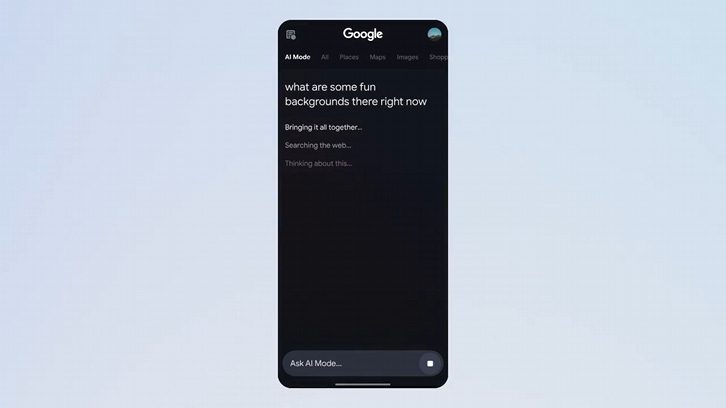


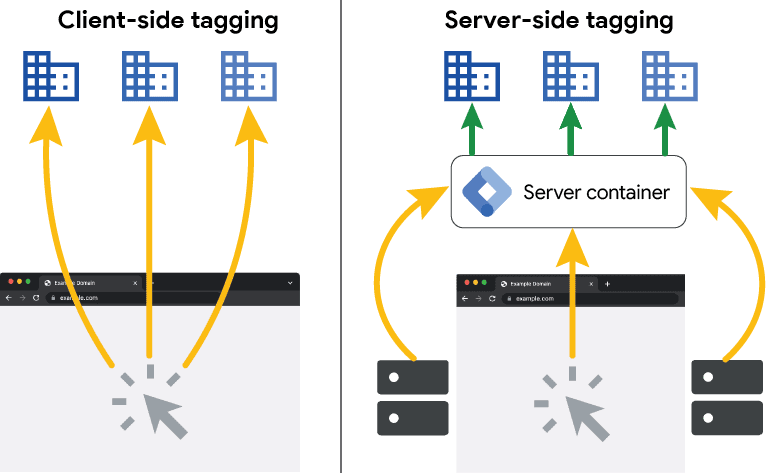
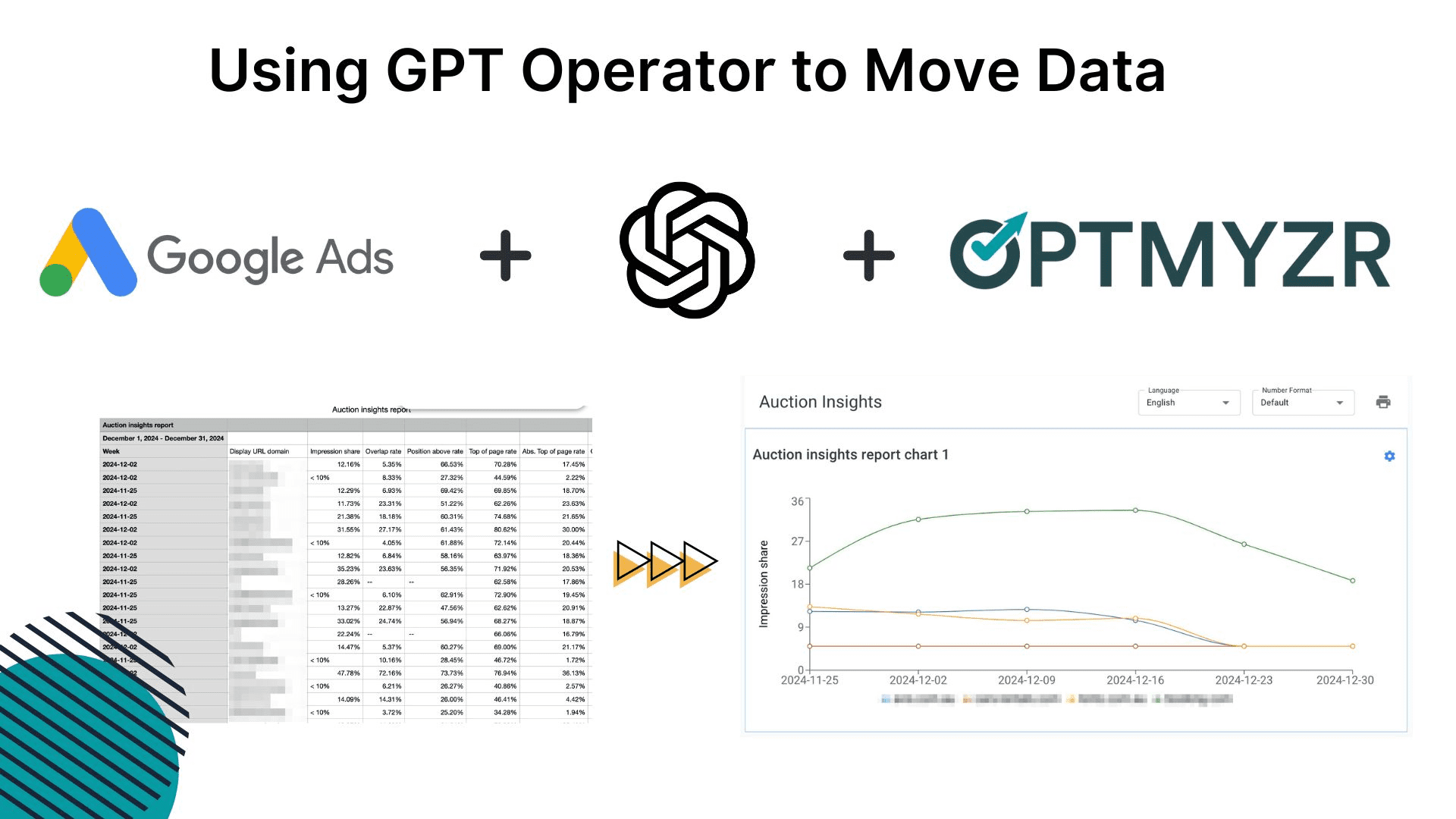
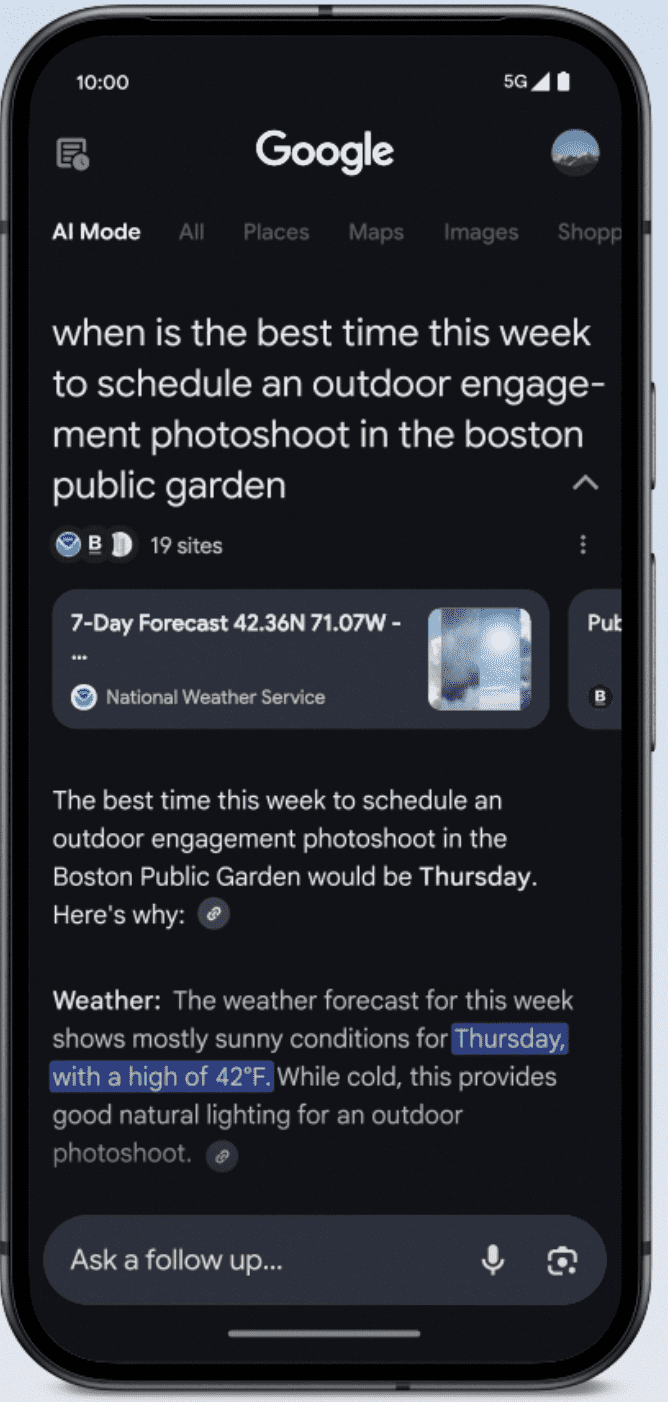
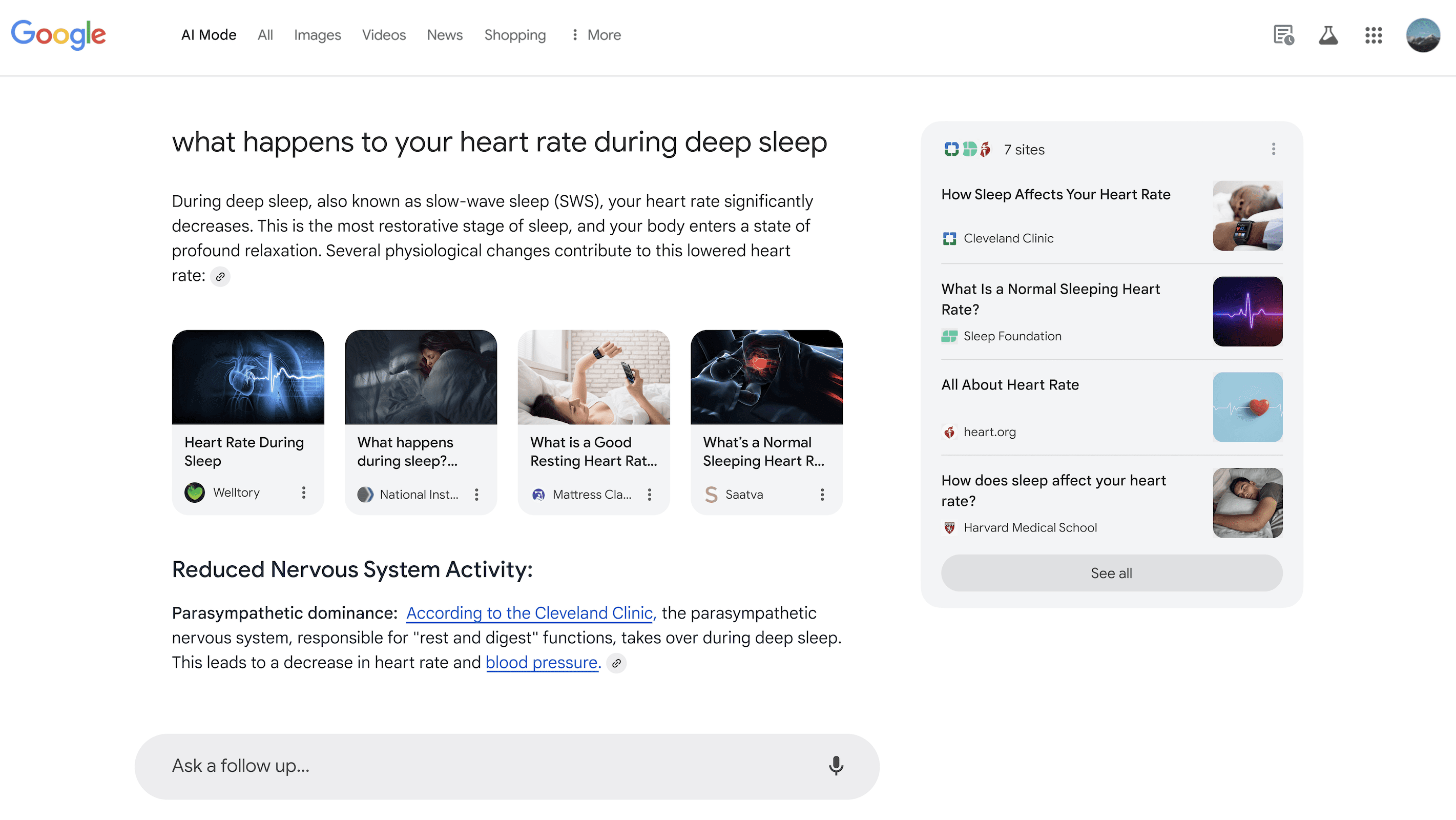
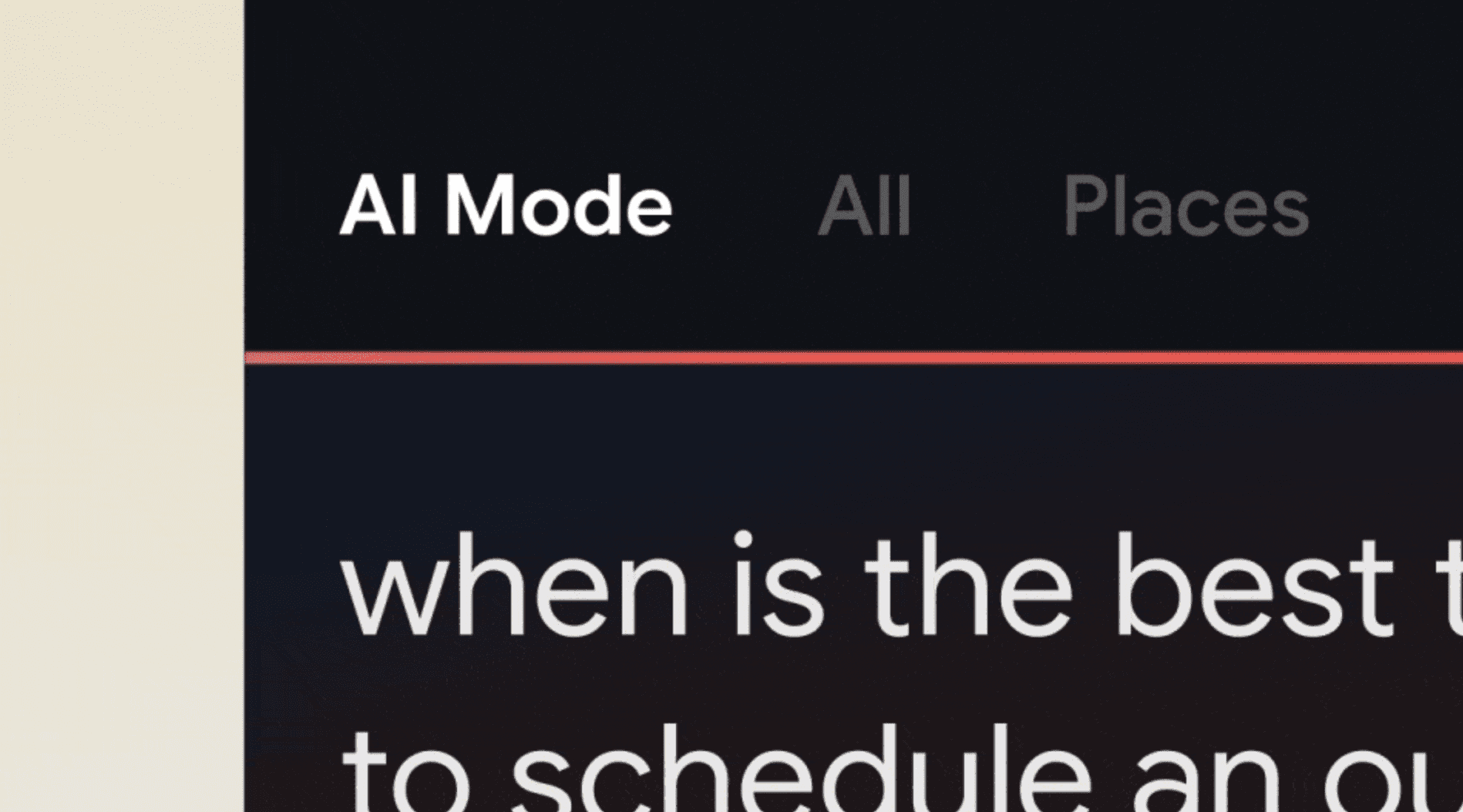
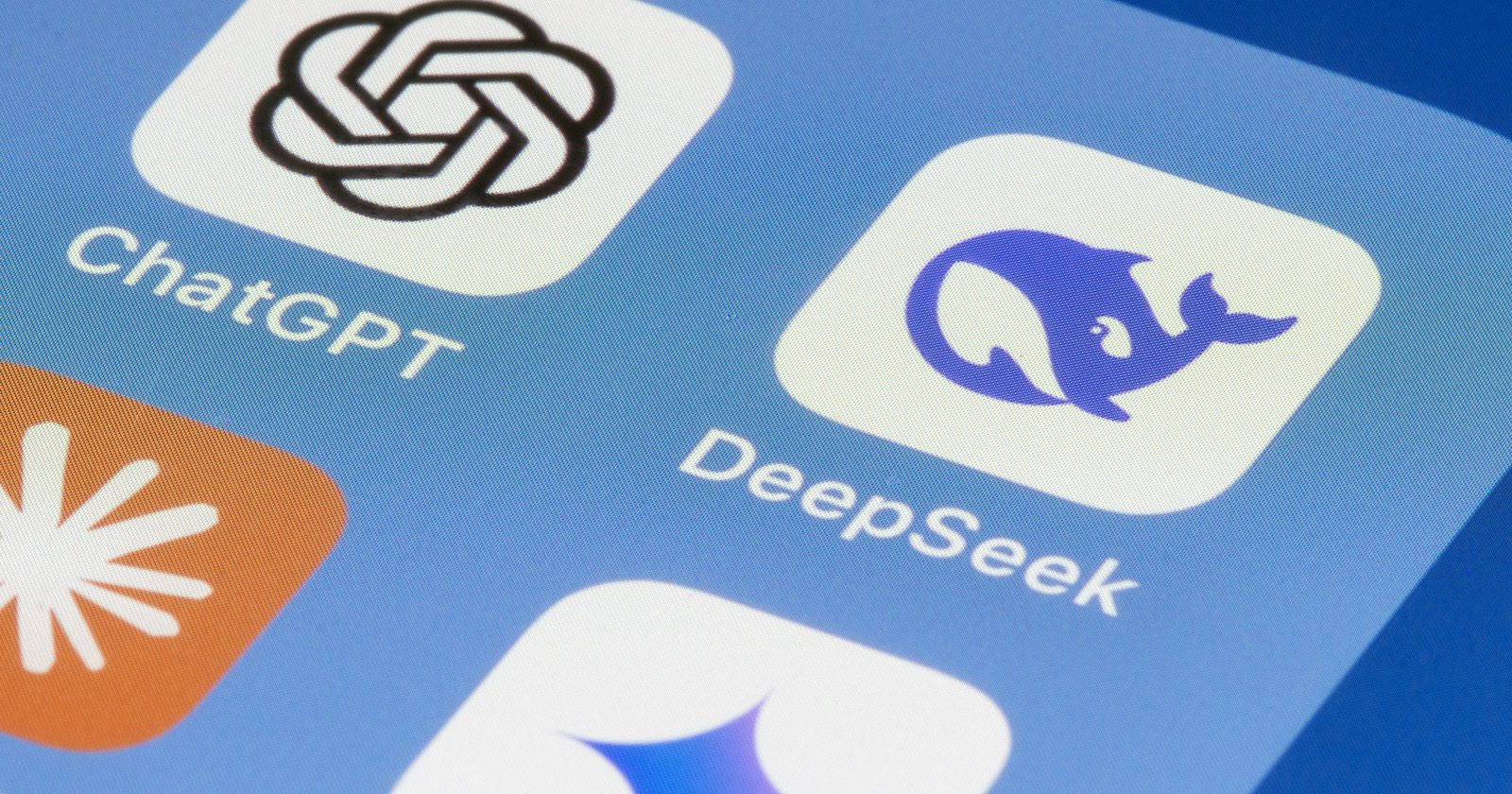

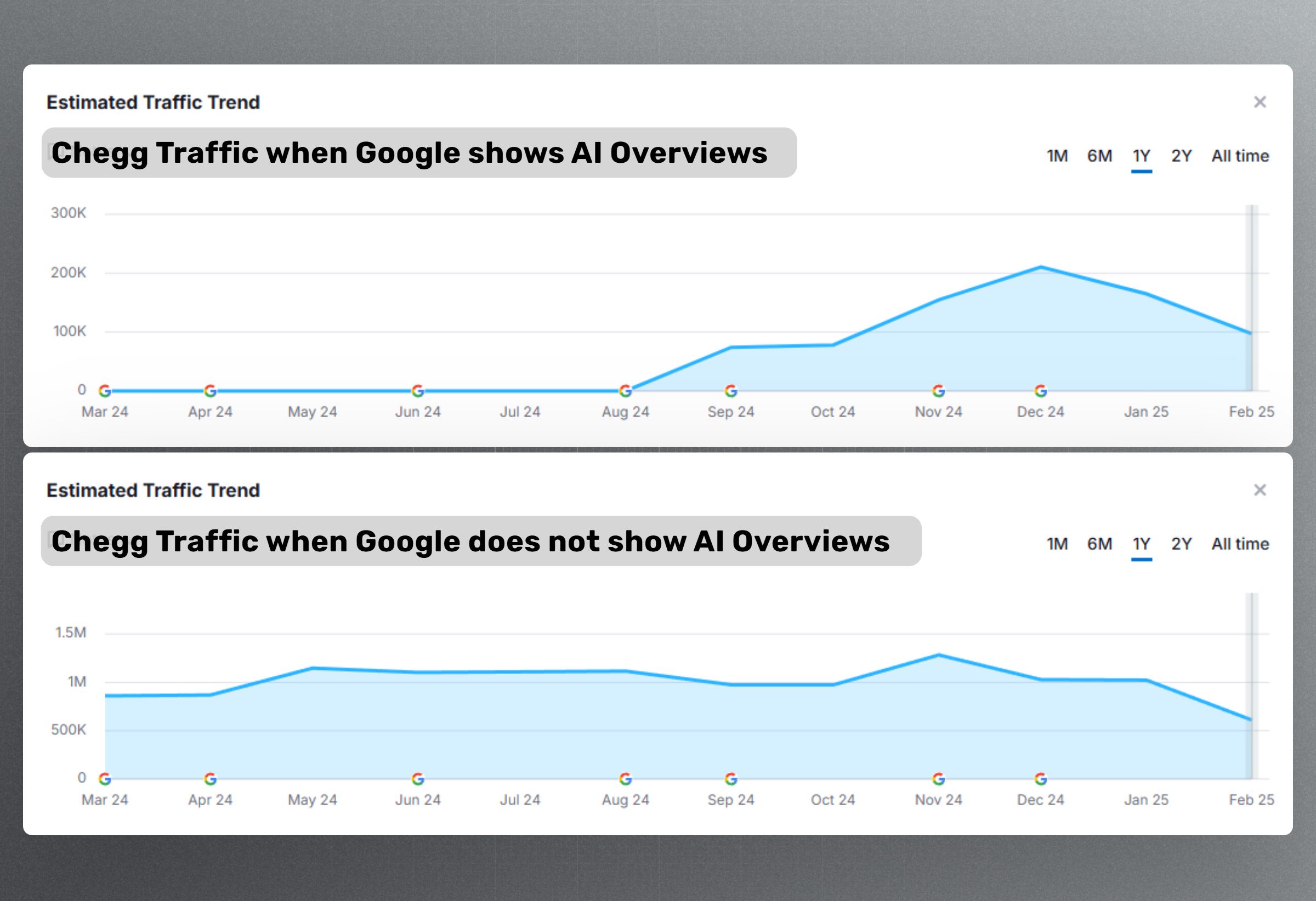
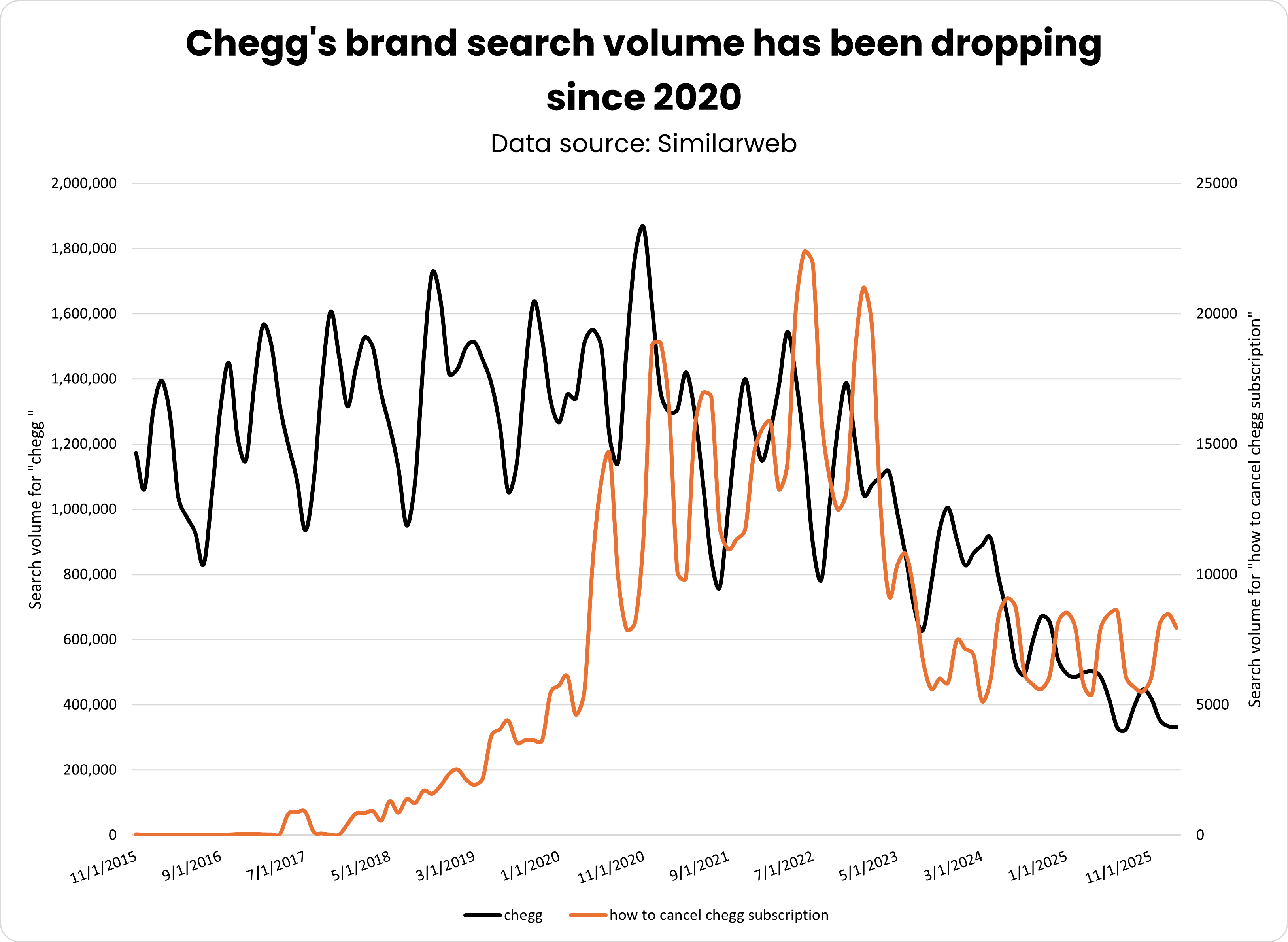
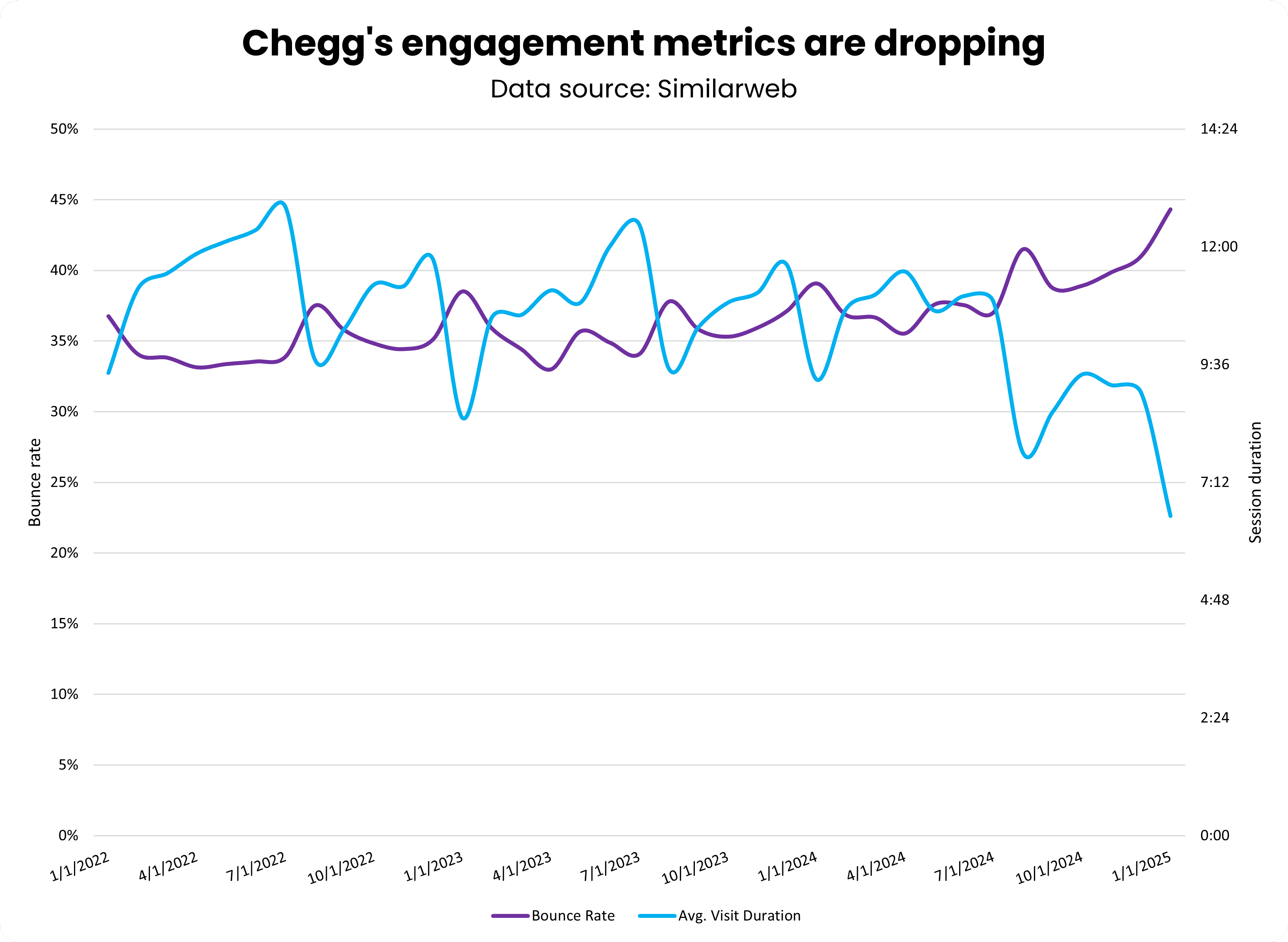
![google search for [homework help]](https://ecommerceedu.com/wp-content/uploads/2025/03/google-search-683.jpg)
